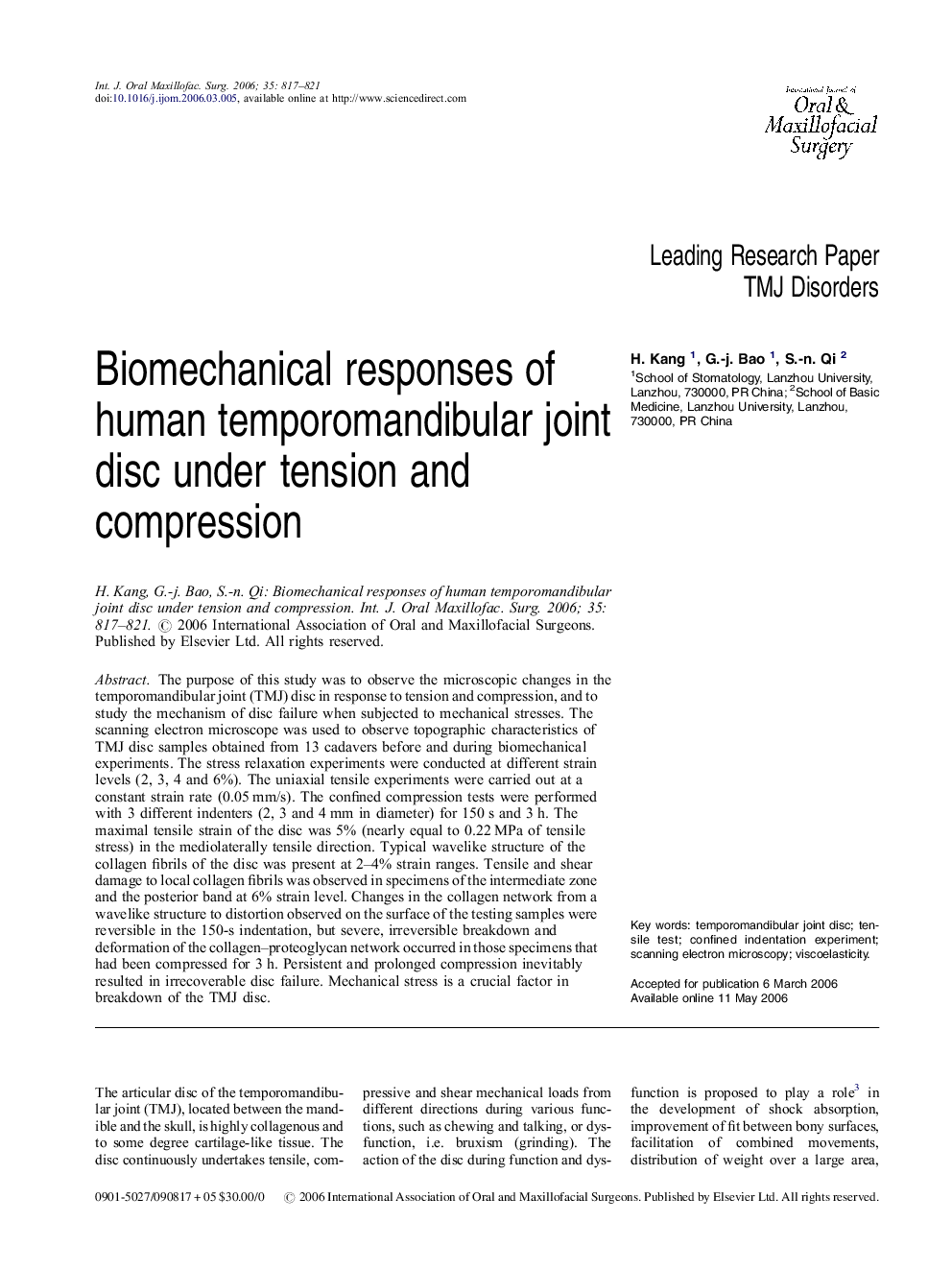| Article ID | Journal | Published Year | Pages | File Type |
|---|---|---|---|---|
| 3134303 | International Journal of Oral and Maxillofacial Surgery | 2006 | 5 Pages |
The purpose of this study was to observe the microscopic changes in the temporomandibular joint (TMJ) disc in response to tension and compression, and to study the mechanism of disc failure when subjected to mechanical stresses. The scanning electron microscope was used to observe topographic characteristics of TMJ disc samples obtained from 13 cadavers before and during biomechanical experiments. The stress relaxation experiments were conducted at different strain levels (2, 3, 4 and 6%). The uniaxial tensile experiments were carried out at a constant strain rate (0.05 mm/s). The confined compression tests were performed with 3 different indenters (2, 3 and 4 mm in diameter) for 150 s and 3 h. The maximal tensile strain of the disc was 5% (nearly equal to 0.22 MPa of tensile stress) in the mediolaterally tensile direction. Typical wavelike structure of the collagen fibrils of the disc was present at 2–4% strain ranges. Tensile and shear damage to local collagen fibrils was observed in specimens of the intermediate zone and the posterior band at 6% strain level. Changes in the collagen network from a wavelike structure to distortion observed on the surface of the testing samples were reversible in the 150-s indentation, but severe, irreversible breakdown and deformation of the collagen–proteoglycan network occurred in those specimens that had been compressed for 3 h. Persistent and prolonged compression inevitably resulted in irrecoverable disc failure. Mechanical stress is a crucial factor in breakdown of the TMJ disc.
